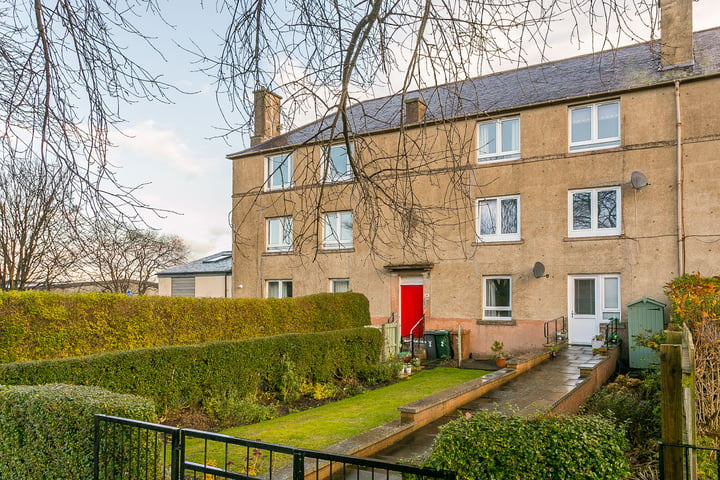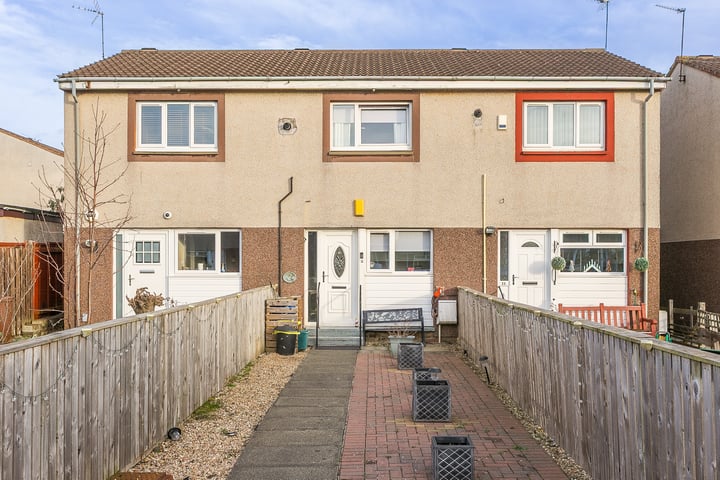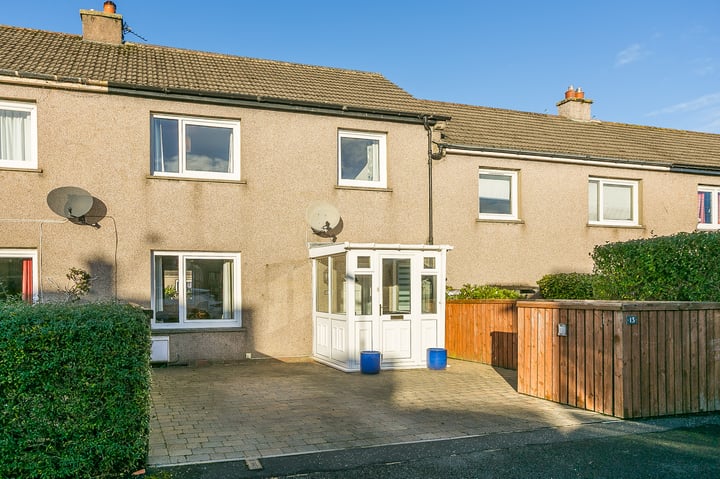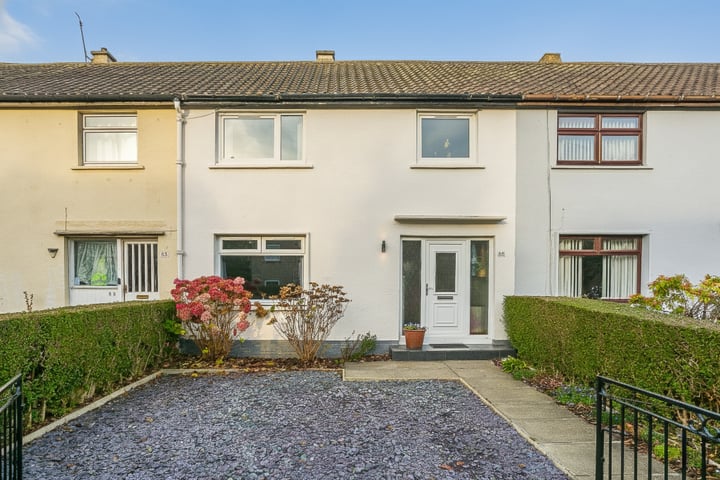Property Prices in the East of Scotland Continue to Rise
High demand from buyers is driving up selling prices, according to the ESPC. Between July and September 2018, average selling prices in east central Scotland rose by 6.2% to £250,991 compared to the same period last year. In Edinburgh, the average selling price rose by 7.8% to £272,241. From July to September 2018, the number of properties coming to market increased by 4% annually. Although this is a slight dip compared to the August figure of 5%, this continued trend is a positive sign for buyers.
The number of properties sold during this period decreased by 6.7% annually, but this is more a reflection of fewer properties coming to market in recent years rather than a lack of buyer demand. The median time to sell in east central Scotland between July and September 2018 was 20 days, which is two days slower than the same period last year. In Edinburgh, this figure was 18 days which is two days slower than last year.
ESPC’s Business Analyst, Jamie Fraser-Davidson, said: “The increase in average selling prices in many areas of east central Scotland indicates that there continues to be strong demand from buyers, even as we get closer to Brexit. This can also be seen by the continued trend of a rising number of properties marketed as ‘offers over’ as well as an increased percentage of homes achieving or exceeding their Home Report valuation. It will be interesting to monitor if buyer confidence does fluctuate in future months as we approach the date the UK is scheduled to leave the EU.”
Glasgow Performs Well Despite Asking Prices in Parts of the UK Being Slashed
The asking price of almost two-in-five properties for sale in Britain has been reduced by an average of more than £26,000, new research has found. According to the property website, Zoopla, over the last six months sellers have cut the price of 37.9% of homes, up from 32.4% in April.
The figures seem to be good news for the housing market in Glasgow which along with Manchester is performing strongly whilst London now lags behind. Brighton had the highest proportion of list prices reduced (46%), while Glasgow and Manchester were at the other end of the list with 19% and 26% respectively.
Average Price of Property in Scotland up 4.1% On Previous Year
Recent figures from the UK House Price Index show that the average price of a property in Scotland has risen more this year than in the rest of the UK. The average price of a property in Scotland in August 2018 was £153,309, an increase of 4.1% on August in the previous year. This compares to a UK average of £232,797, which was an increase of 3.2% on August in the previous year. The biggest price increases were in West Dunbartonshire (11.9% to £110,867), Inverclyde (9.8% to £112,550) and City of Glasgow (8.9% to £136,353). Decreases were recorded in City of Aberdeen (4.0% to £161,063), Aberdeenshire (2.5% to £188,426), Scottish Borders (2.5% to £152,576) and East Ayrshire (1.7% to £97,696).
Edinburgh vs Glasgow – Does It Pay to Commute?
Anyone who has lived in or around London knows how many people are prepared to commute up to two hours to work in an attempt to balance decent living accommodation with a manageable journey to work every day. So, just how much can you save if you take the same approach in Scotland’s two principal cities?
According to new research by Bank of Scotland, workers in Edinburgh can save an average of £82,088 by commuting up to an hour each day. House prices in a number of towns around an hour’s train journey away from the capital (including Dunblane, Glasgow, Motherwell, Dunfermline and Kirkcaldy) are, on average, £170,927. That’s a huge £82,088 lower than the average of £253,015 in Edinburgh city centre, according to the Bank of Scotland’s research.
A 30-minute commute will save homebuyers £80,671 (32%). Homebuyers looking to buy a home in a town approximately 30 minutes away from Edinburgh (including North Berwick, Dunbar, Livingston, Falkirk, Bathgate), will pay an average price of £172,345, £80,671 less than they would in town. A 15-minute commute, by comparison, might save £70,595 (36%).Unlike in Edinburgh, house prices in Glasgow are actually increasingly expensive the longer the commute to work becomes. A 15-minute commute from a town such as Paisley would see homebuyers paying £124,319, 29% less than the average house in Glasgow city centre (£174.688). However, a 60-minute commute, which includes towns like Edinburgh, Perth and Dumfries, pushes house prices up to £227,525, 30% (£52,837) higher than the city centre.
The most affordable commuter town to Edinburgh is Kirkcaldy, where the average house price is £133,589. For Glasgow, the most affordable commuter town is Greenock which sees average house prices of £114,108.Graham Blair, Mortgages Director at Bank of Scotland, commented: “Many people have a desire to buy near their place of work to escape the morning commute. However, for some towns and cities, the premium this comes with can price out the average buyer. With savings of £80,000 to be gained an hour outside of Edinburgh, and £50,000 just 15 minutes from Glasgow, it is an attractive pull for any potential purchaser to look further afield. However, the decision to commute is not simply a trade-off between financial costs and journey times as quality of life is an important consideration. Family circumstances, schools, physical environment and value for money all come into the balance.”
Budget October 2018 – help for first-time buyers through shared ownership scheme
Stamp Duty reductions are being introduced for people in England and Northern Ireland buying their first home through a shared ownership scheme. They will not pay property tax on shared ownership homes that cost up to £500,000. It may be that the devolved Governments in Scotland and Wales will make a similar announcement in due course – the date for the Scottish Budget is 12 December 2018. Information about the most recent tax changes for first-time property buyers, which came into effect in Scotland on 30 June 2018, can be found here.
From Our Point of View
October, which is usually a good month for property sales and new properties coming to the market for sale, was unexpectedly buoyant. We saw activity levels on a par with what we would expect in August and September.
Perhaps, after the Beast from the East which interrupted the traditional Spring season, pent-up demand eventually caught up with the market and sellers in particular rushed to try to get their property on the market and sold before the turn of the year.
Buyer demand remains very strong, as it always is, throughout the winter period. It stands to reason that all of those buyers who unsuccessfully bid at Closing Dates in September don’t stop looking for their ideal home in October, November and December.
However, sellers traditionally are more reluctant to put their properties on the market at this time of year. This leads to an even more acute shortage of new properties coming to the market in Winter which, combined with that high demand, leads to very quick selling times and excellent selling prices in Winter. With slim pickings to choose from, stock that would have traditionally been considered to be less attractive is selling quickly and achieving strong selling prices.
In short, it’s been a very busy start to the Winter period and we would expect to see this continue right through to the end of the year.
We’re here to help
If you are thinking of selling your home or investment property, get in touch with us by calling 0345 646 0208 (Option 1) or by emailing [email protected] to organise a free valuation of your home or to get a full, transparent breakdown of the costs of selling your home.
You can also now instantly book a free valuation appointment, online, by following this link.






Leave a Reply